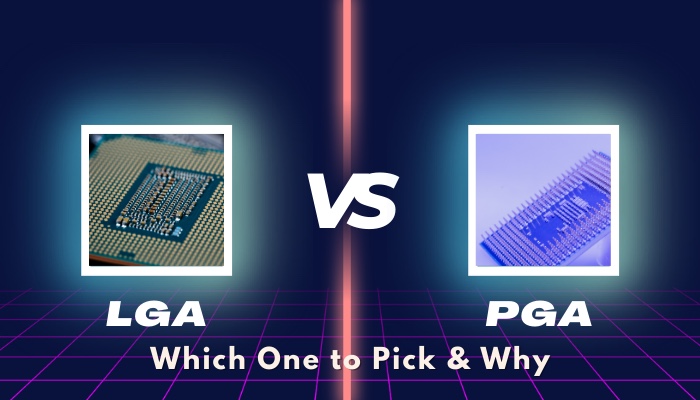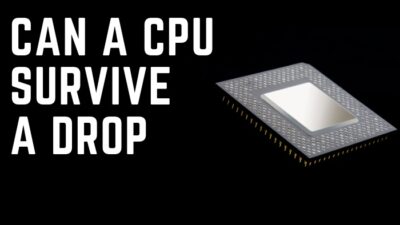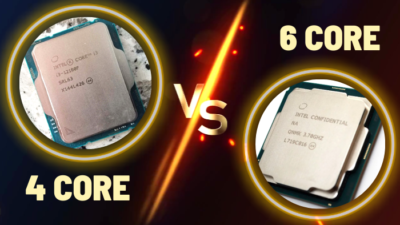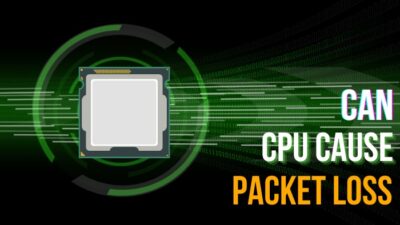Surface mount technologies (SMT) specify how a processor will connect with the motherboard. Among different SMT, the LGA and PGA are the most prevailing.
Market leading AMD and Intel use the PGA and LGA sockets consecutively. Tech enthusiasts are debating for a decade on which CPU socket is the best.
This article will provide a comprehensive comparison between LGA and PGA CPU sockets. Moreover, I will also discuss which socket you should choose.
So, let’s get started!
What is a CPU Socket?
A CPU socket is a specific type of connector that can establish a connection between the microprocessor and motherboard. It uses a series of pins to connect. CPU sockets act like a central hub to link the microprocessor with all the different motherboard parts.
If the processor is connected via a CPU socket, it is not welded. Therefore, you can detach the CPU from the motherboard.
CPU sockets are mostly used on desktops rather than laptops. There are several types of CPU sockets available on the market, such as LGA, PGA, BGA, ZIP, etc.
While buying a new motherboard, you must ensure it has the right CPU socket for your CPU model. Unless, you will not be able to connect the CPU to your new motherboard. This article will mainly cover the LGA and PGA sockets details and comparisons.
What is LGA – Land Grid Array?
The acronym LGA stands for Land Grid Array. This socket is mainly used by Intel. Land Grid Array (LGA) is a surface mounting packaging for Integrated Circuits. It has the contact pin on the motherboard rather than the CUP itself. And the chipset has a metal pad also known as lands.
Intel motherboards and processors have various Land Grid Array sockets, such as LGA 1156, LGA 1200, LGA 201, LGA 2066, and so on. Check out the most suitable CPU coolers for LGA 1200.
AMD is also using the LGA sockets for its new workstation and server-grade CPUs. Ryzen Threadripper and Ryzen Epyc CPUs use the sTRX4 and the SP3 sockets, which are actually LGA4094 sockets.
Advantages of LGA CPUs
As the pins are placed on the motherboards, LGA CPUs have some advantages over the PGA-based CPUs.
Here is the list of advantages of the LGA CPUs:
- Durable: As the pins are on the motherboard, there is less chance of damaging the pins by dropping the processor.
- Better Space Management: Compared to other sockets, LGA pins are smaller, which helps to utilize motherboard space more efficiently.
Disadvantage of LGA CPUs
Besides some great advantages, the LGA CPUs have some drawbacks too.
Consider the following list of disadvantages of the LGA CPUs:
- Easy Bending: Since the pins are on the motherboard, any pressure without proper alignment can easily bend the pins.
- Full Replacement: It’s hard to repair any pin on LGA sockets. Hence, you may need to replace the entire CPU socket if anything went wrong.
The CPU is the most costly part of your computer. While handling the CPU or installing it on the motherboard, you must be careful, otherwise, you can damage your motherboard.
What is PGA – Pin Grid Array?
The acronym PGA stands for Pin Grid Array. This socket is exclusively used by AMD. This socket technology is the exact opposite of the LGA socket. Pin Grid Array (PGA) has pins on the CPU itself instead of the motherboard, which is more efficient.
On PGA sockets, the pins are strong enough to resist any damage. However, they can still receive damages if you don’t handle it with care.
While installing the PGA CPUs, avoid placing them into the wrong sockets. After placing the pins in the right holes of the motherboard, you can secure the processor with a lever.
Though AMD uses PGA sockets for most of its processors like the Athlon and Ryzen series, their Threadripper series CPUs are using the LGA socket. Go through the following section to learn about the advantages and disadvantages of using PGA sockets.
Advantages of PGA CPUs
Using the PGA socket, you can save the motherboard from any damage occurred by the socket pins.
Here’s a list of advantage of the PGA CPUs:
- Easy Repairing: If single or multiple pins are bent because of any external damage, you can conveniently repair them.
- Safer Motherboard: Since the pins are attached to the processor, your motherboard remains safe even after CPU misalignment.
Disadvantage of PGA CPUs
A PGA processor’s pin can easily bend if you don’t handle it with care or place it in the motherboard with CPU misalignment.
Check the following list of the disadvantage of the PGA CPUs:
- Unsafe: Inserting and separating the CPUs from a motherboard is risky, as any misalignment can easily bend or break the pins.
- Complete Replacement: The CPU is the most pricey part of the computer hardware. If you damage a pin on the CPU, you may need a complete replacement.
After learning all the pros and cons of LGA and PGA sockets, it’s time to focus on the comparison of these sockets. If you accidentally bent your CPU or motherboard pins, check out a separate post on how to fix the bent pins on a CPU and motherboard.
What is the Difference Between LGA and PGA?
The main difference between the LGA and PGA is durability. LGA sockets have contact pins on the motherboard that makes the CPU more durable. On the other hand, PGA sockets have contact pins on the CPU that makes the motherboard more durable.
Besides the difference in durability, LGA and PGA also have dissimilarities in build quality, space efficiency, installation process, and compatibility.
Consider the subsequent table for a better understanding of the differences between the LGA and PGA sockets.
| Parameters | LGA Socket | PGA Socket |
|---|---|---|
| Structure | Pins are on the Motherboard | Pins are on the processor's |
| Durability | Durable CPU | Durable Motherboard |
| Build Quality | Less Fragile | More Fragile |
| Efficiency | More Space | Less Space |
| Compatibility | Intel | AMD |
| Installation | Easier to dismount | Easier to mount |
The comparison table above clears the different aspects of the LGA and PGA sockets. If you are interested in taking a quick look at other available CPU sockets, move on to the next section.
Also, check out the differences between LGA and BGA.
How Many CPU Sockets are Available?
CPU sockets come in two major types: Pin Grid Array (PGA) and Land Grid Array (LGA). These two types of sockets are mainly used by Intel and AMD. Additionally, you will find some other types of CPU sockets, such as Ball Grid Array (BGA) and Zero Insertion Force (ZIF).
Go through the following discussion for more information about different types of CPU sockets.
LGA
Land Grid Array or LGA socket has contact pins on the motherboard rather than the CPU. Installing the LGA CPUs is much quicker and more efficient.
Place the CPU on top of the pins and a slight pressure can easily connect the CPU to the motherboard. LGA sockets are more durable compared to PGA sockets.
PGA
Pin Grid Array or PGA socket has connector pins on the CPU rather than the motherboard. These types of CPUs are more fragile and get damaged if not handled with care.
BGA
Ball Grid Array or BGA sockets have copper pads soldering. These types of sockets are less fragile and don’t receive damage easily.
This architecture also helps to send data faster to the motherboard compared to other sockets.
ZIF
Zero Insertion Force or ZIF sockets have the ability to connect with the motherboard without pressing hard on the CPU. PGA sockets can be referred to as ZIF sockets. Using this socket, you can reduce the probability of damaging the pins.
Which CPU Socket is Better?
If your concern is durability, the best choice is the Land Grid Array or LGA sockets. On the contrary, the Pin Grid Array or PGA socket has a more durable motherboard compared to LGA sockets. However, breaking the CPU pins can cost far more than breaking the motherboard pins.
Every model has its own benefits and drawbacks that are worth considering. Many people choose PGA over LGA because it is easy to realign the pins with the motherboard.
Despite that, you should also consider that the LGA pin count and power delivery are rapidly increasing. Several manufacturers like AMD are also using the LGA sockets for their latest CPUs.
Intel 10th Gen and 11th Gen desktop processors use the LGA1200 socket. And the 9th Gen, 8th Gen, 7th Gen, and 6th Gen desktop processors use LGA1151 socket. All these models offer you a more durable CPU that is safer than any other CPU sockets.
As a socket supports only certain CPUs, decide the socket type depending on the CPU you have or want to buy.
Frequently Asked Questions
How many sockets should a CPU have?
Usually, a computer only has one socket. But the servers can support 1/2/4/8/16/32 CPU sockets.
What is the most common CPU socket?
The most common CPU socket available in the market is Pin Grid Array (PGA) and Land Grid Array (LGA) sockets.
Why is AMD switching to LGA?
AMD is using the PGA sockets for a long time. However, the contact pins of the PGA sockets are often bent or broken. This encourages AMD to switch from PGA to LGA sockets.
Wrap Up
The main difference between the LGA and PGA is the position of the pins. On the LGA sockets, the pins are on the motherboard, and on the PGA sockets, the pins are on the CPU.
Picking the right one is highly dependent on your choice because you will find numerous LGA-supported CPUs and also PGA-supported CPUs.
I hope this article helps to eliminate all your confusion about different types of sockets, especially the LGA and PGA sockets. Leave a comment below for further assistance.




